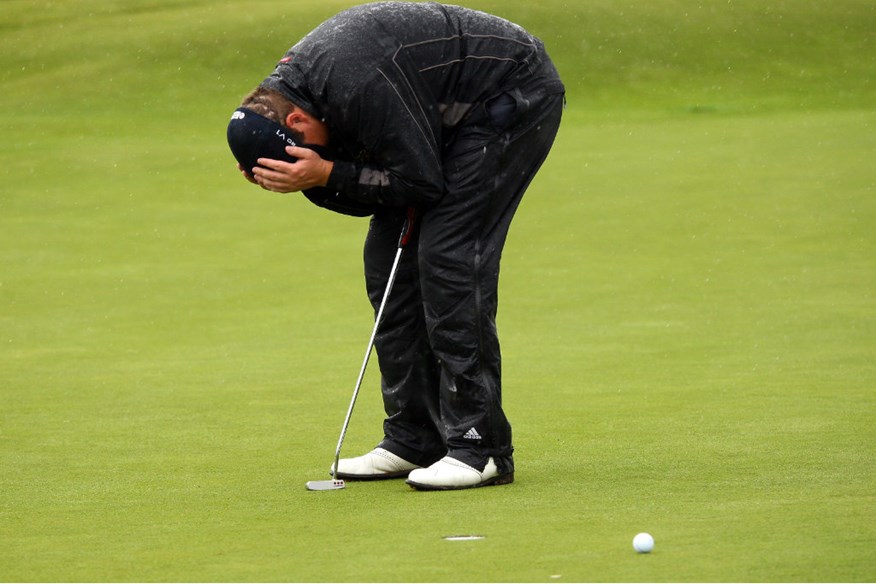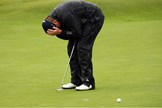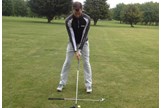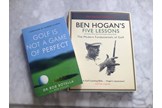Journey to scratch: my first cut and two missed tiddlers
Last updated:
Previous articles:
Part One – How hard can it be to go from 10 to scratch?
Part Two – I’m trying to get from 10 to scratch, and now I’m off… eleven?!
Two feet. It’s not a lot, is it? It’s the height of a slightly above average newborn baby boy. It’s the length of a baguette. It’s the length of two putts I’ve missed on the 18th green at Burghley recently, both of which have cost me dearly.
First, the good news. After a faltering start to my campaign that saw me go up to 10.5, I teed it up in a midweek stableford with 11 shots at my disposal. I played some good golf, some not so good, and wound up with 37 points, despite missing a par putt of less than four feet on 17 and a two-footer for birdie on the last.
Having played early, I was the leader in the clubhouse, but on a nice day with little wind, I fully expected several people to come in with much higher totals.
They didn’t.
One guy got 38 points.
I finished second.
If I’d holed that two-foot putt, I’d have won on countback.
The good news, though, is that I got cut 0.4 shots, getting me safely back to a 10 handicap.
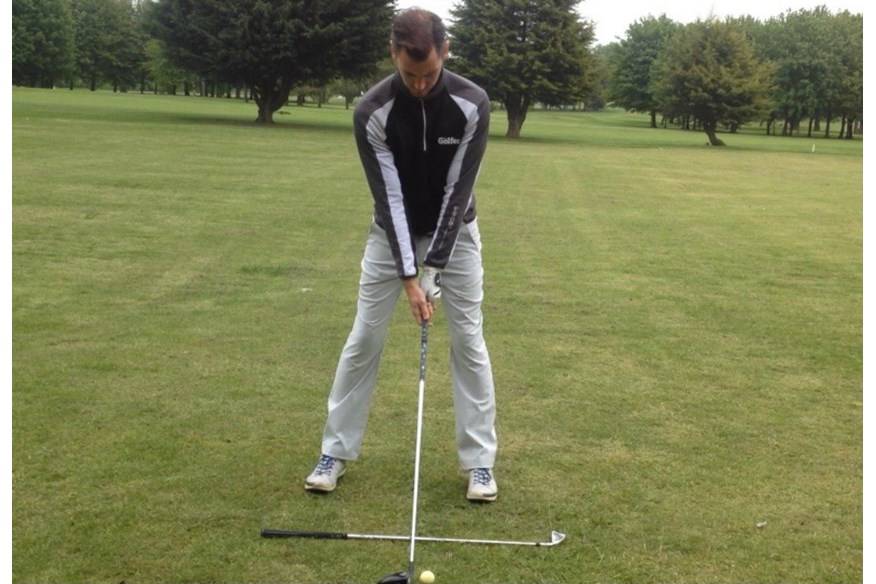
This photo demonstrates my ever-improving setup and, less pleasingly, my ever-retreating hairline
A few days later, I played the first round of the singles knockout against a guy off 8. I started pretty averagely and was 7-over after nine holes. My opponent was playing fantastically – hitting every fairway and green – so despite only being two shots over my handicap, I found myself four-down at the turn.
Then something happened. I realised that the man-turned-robot I was playing against wasn’t about to start making mistakes and handing me holes. I realised that if I didn’t do something pretty sharpish we’d be shaking hands very soon. I started playing well. Really well. I went level par for the next eight holes, which got me back to 1-down as we headed down the last. With my opponent safely on the par-5 green in three and me just short in two, I knew I needed to get up-and-down to win the hole and keep the match alive. I hit a perfect chip, landing at the top of the two-tier green and winding its way down to – you guessed it – two feet.
“I can’t quite give it to you,” said my opponent, apologetically, visibly shaken that he had been 4-up and was, in all likelihood, about to be facing a playoff hole. “It’s across the slope.”
His two-putt securely in the bank, I’m faced with the exact same two foot putt that I let dribble away on the low side just a couple of days ago, costing me a competition win.
I’m not going to make that mistake again.
I stand over the putt.
I make a confident, committed stroke.
I hit it pure.
I wait to hear the satisfying sound as it rattles into the middle of the cup.
I don’t hear anything.
I’ve missed it on the high side.
“I wasn’t expecting that,” says the victor, equal parts surprise and relief.
Needless to say, I didn’t sleep very well that night.
If you’re wondering, even the PGA Tour’s worst short putter holes out from three feet or less 97.32% of the time. Ken Duke has that dubious honour. 32 players haven’t missed a single putt from that range this season. Not many of them have missed two in two rounds from two feet, I’ll bet.
Defeat is hard to take, especially having done so well to fight back, but I have to take the positives from my performance. Repeat that in a medal and I’ll be close to a nine handicap, my first time in single figures.
As luck would have it, two days later there is a midweek medal.
I shoot 88 and get 0.1 back. Don’t you just love golf?
Mark, my coach, asks me how it went. When I tell him, he asks me, quite fairly, why I decided not to warm-up before the round. Before any competitive round, I’ll usually spend a bit of time on the putting green, hit a few chips, and then hit 20-25 balls to prepare.
I’ve been feeling a bit tense in competitions, because I’m so desperate to score well and get my handicap down, so I’d made the conscious decision to treat this competition like a knockabout and just turn up, go out, not worry about the score and see what happened. A double-bogey double-bogey start is what happened.
“You need to have a routine,” Mark tells me, and I know he’s right. “All the top players, they do the same things every time. When you do things enough, they become habit, and then they’re easy to do. You should have a warm-up routine that you do before every round; not just competitions. When you go out to play with mates, you don’t go out hoping to play crap, do you? Warm-up before every round and you’ll have a better chance of scoring well.”
I know my plan was stupid, and I know Mark is absolutely spot-on. I did some research into the warm-up routines of the top three players in the world. You can watch each of their routines here, if you like.
That night, I open the first of two golf books that I bought on the advice of TG readers – Golf Is Not A Game Of Perfect by golf’s number one psychologist, Dr Bob Rotella.
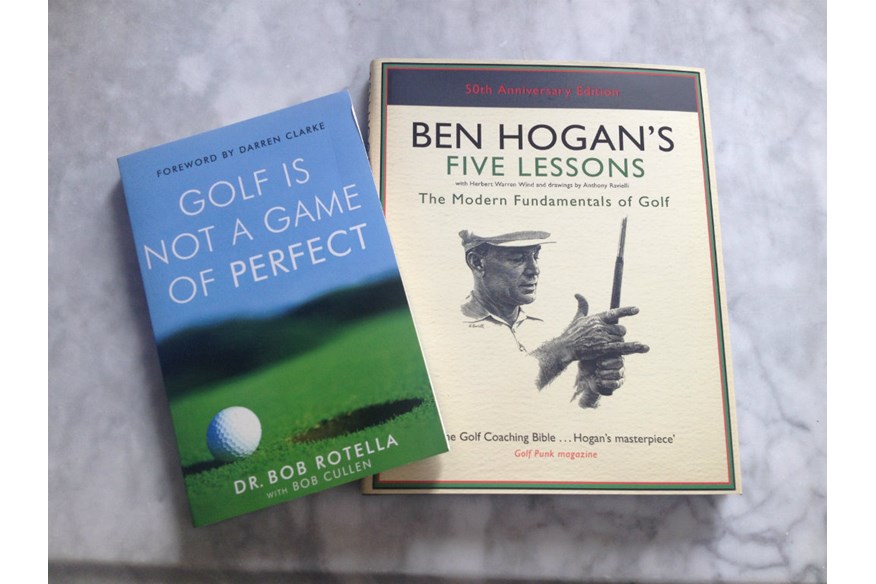
I hammer through it in one sitting. As I finish the final page, I realise I have a dead-leg where I’ve been sprawled across the sofa without moving for so long. But I also have a completely new mental approach to the game. The book is fantastic. If you haven’t read it, you should. I honestly cannot recommend it enough. I genuinely believe that it will help every golfer, from pro to complete novice.
Some of the biggest things I took from it are:
– The need for a deliberate and consistent pre-shot routine on every shot.
– Picking a very specific target, e.g. an exact branch in the distance, not just “the fairway”.
– Focusing solely on hitting the ball to that target, emptying your mind of all swing thoughts (this is surprisingly tough!).
– Remembering that golf is hard and that everyone hits poor shots, so putting them behind me rather than beating myself and letting them affect the next shot or even the next hole.
– Taking one shot at a time, rather than thinking ahead to what I need to score on the next six holes in order to get cut.
There’s tonnes more, but again, I’d wholeheartedly recommend you get a copy of the book and make your own learnings from it.
(This isn’t an advert for the book, by the way. I bought mine on Amazon, used, for £2.80. Besides, it was published over 20 years ago, so I doubt they’re spending a huge amount on adverts now.)
With my head now in the right place, and with plenty of competitions lined up over the next few weeks, I’m optimistic that I can get myself into single figures for the first time in my life. I’ll be warming up thoroughly, of course…
